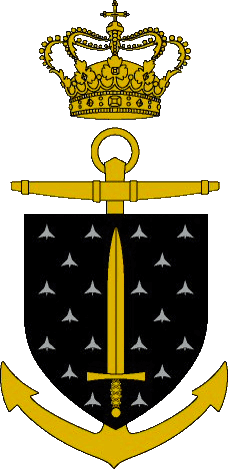



The model

I began building the
scale model of NIESL EBBESEN in April 2020 and finished it in December
2021 using construction plans
from the Royal Danish Navy’s Ship Yard and an original English plan of
the River-class frigate SPEY (1941), both made available by courtesy of
the Royal Danish Naval Museum's Guild
of Model Makers (of which I am a member).
The model is built in scale 1:60 and
thus 153 cm long, 18,6 cm wide and about 40 cm tall.
The armament, deck equipment and radar/antenna systems changed considerably in the 20 years the frigate served under Danish flag. I have chosen to show NIELS EBBESEN in the perion 1955-60 where she was probably most heavily armed for anti-submarine, air and surface warfare.
I have found useful details concerning the construction and equipment in Brian Lavery’s book: River-class Frigates and the Battle of the Atlantic (National Maritime Museum). As I have no personal photos from when I served onboard, the many pictures posted by old crew members on NIELS EBBESEN on their home page : www.maritimevenner.com have been of great help. A special thanks to retired Commander Erik Månson, former NIELS EBBESEN crew member, for useful discussions and for making available original plans from the Danish Navy's Shipyard.
Also, due to the large number of ships of the class built,
there was a lot of information to be found on the internet,
although not all is relevant to the configuration of the Danish
River-class frigates.
To the extent possible I have produced everything
myself and ready-made parts are limited mainly to propellers,
sceptres, anchor chains and flags.
I have made extensive use of the experiences gained by constructing my first “modern” warship, the Danish corvette FLORA, e.g. using various combinations of wood (plywood, pine and balsa), styrene, plexiglass and brass. Plywood has been used for keel and frames and pinewood strips for the planking. Decks are made from styrene.
For the armament and deck fittings, a
combination of wood, styrene and brass have been used as appropriate. It
also worked well on my model of FLORA.
Small and detailed parts are photoetched.
For the paint jobs I have used enamel paint. For some inexplicable reasons I have more confidence in oil-based than water-based paints.
The photo galleries show different stages in the construction processes and they are often self-explanatory with regard to work methods and materials used.
To see a short video (3 mins 46 secs) of the finished model, click
here.